- Abstract
- Industrial sector, workers aged 15-64 with primary education or less, average age
- Industrial sector, workers aged 15-64 with primary education or less, average age (worldwide)
- Industry sector, workers aged 15-64 with primary education or less, average age (world countries, latest year)
- Industrial sector, workers aged 15-64 with primary education or less, average age (region, latest year)
- Reference
Abstract
The data, which shows that the average age of workers with primary school education or less in Uruguay’s industrial sector was 45.9 years in 2021, suggests several important trends. First, an older workforce in the industrial sector may mean it is harder to adapt to changes in the labour market and technological progress. This may be due to the tendency of workers to stay in the same job for long periods of time and the lack of updating of technical skills. Additionally, when many workers have a high level of education below primary school, their professional career progression is limited and they tend to be older as a result. Furthermore, the rise in the senior population in the labour market may affect industrial efficiency and productivity. These factors highlight the need for improvements in labour market structures and education policies, which are key factors for sustainable growth across the economy.
Industrial sector, workers aged 15-64 with primary education or less, average age
Data showing that the average age of workers in Italy with primary school education or less reached 51.9 years in 2015 shows some notable trends. The main factors behind this aging are the retention of long-term workers in the labor market and a short supply of new, younger workers. Italy has been slow to undergo structural change and technological innovation in its economy, meaning that workers, especially those with lower levels of education, tend to stay in the workforce for longer periods without retiring. Furthermore, high youth unemployment rates and educational disparities make it difficult for new talent to enter the labor market. The data for 2021 shows that the average age remains high, at 96.9% of the peak. This situation highlights the need for policies to revitalize the labor market and promote skill development among young people, which is a critical issue for long-term economic growth.
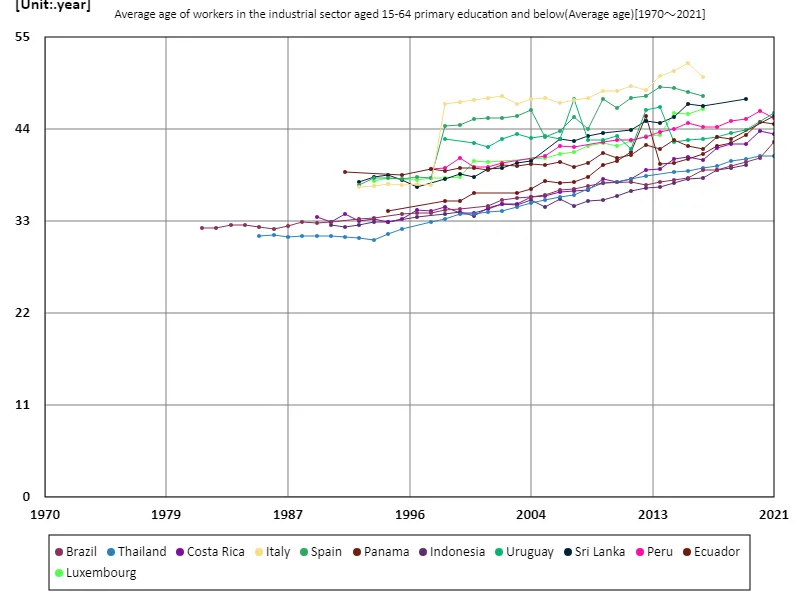

The maximum is 51.9year[2015] of Italy, and the current value is about 96.9%
Industrial sector, workers aged 15-64 with primary education or less, average age (worldwide)
The average age of workers with primary education or less in the Italian industrial sector reached 51.9 years in 2015, indicating a long-term trend towards an ageing labour market. This ageing trend is particularly striking when looking at data from 1981 to 2021, particularly in Italy, where technological innovation and industrial change have been slow, meaning that many traditional workers tend to remain. In Italy’s labor market, skills and experience gaps are widening as less educated workers continue to work for longer periods while new young workers are not entering the market. With the 2021 data at 96.9% of the peak, it can be seen that the aging population is still progressing, affecting the efficiency and productivity of the labor market. This situation calls for greater labor market flexibility and stronger education and skills development, posing important challenges for sustainable economic growth.
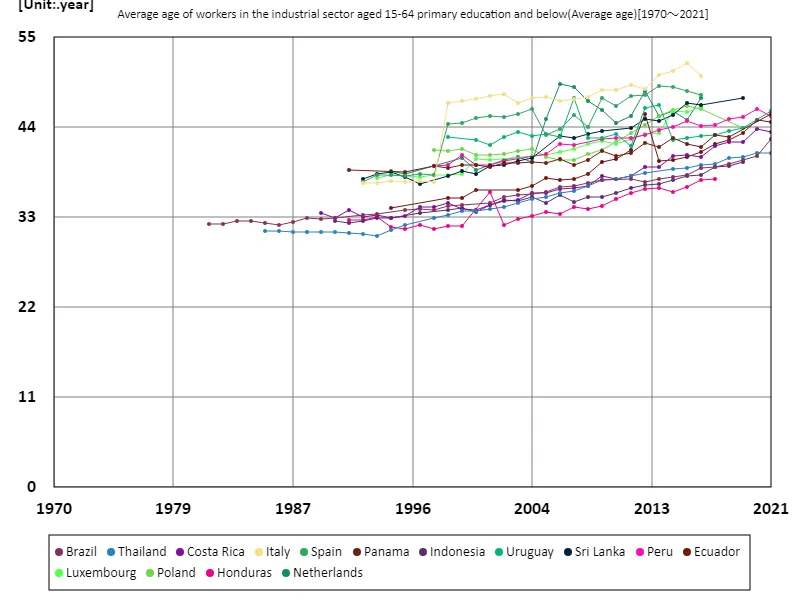

The maximum is 51.9year[2015] of Italy, and the current value is about 96.9%
Industry sector, workers aged 15-64 with primary education or less, average age (world countries, latest year)
According to 2021 data, the average age of workers aged 15 to 64 with primary education or less in the industrial sector is 41.6 years overall, with the highest age being 45.9 years in Uruguay, indicating that the industrial workforce is aging globally. In particular, Uruguay’s high average age reflects the tendency for workers in the country’s industrial sector to stay on the job for a relatively long time, and there may be a lack of new entrants from younger generations. Historically, the industrial sector has seen a trend towards technological innovation and changes in education levels, while workers with lower levels of education have found it difficult to keep up with technological advances and, as a result, tend to be older. Additionally, as the economy matures and industry stabilizes, there are many cases of existing workers continuing to work for long periods of time, which is also a factor in the lack of hiring of younger workers. The median age of 41.6 years indicates the dynamism of the labour market and its growth potential. The labor shortage, particularly among young people, could have an impact on technological advances and industrial transformation, necessitating labor market reforms and a review of education policies.
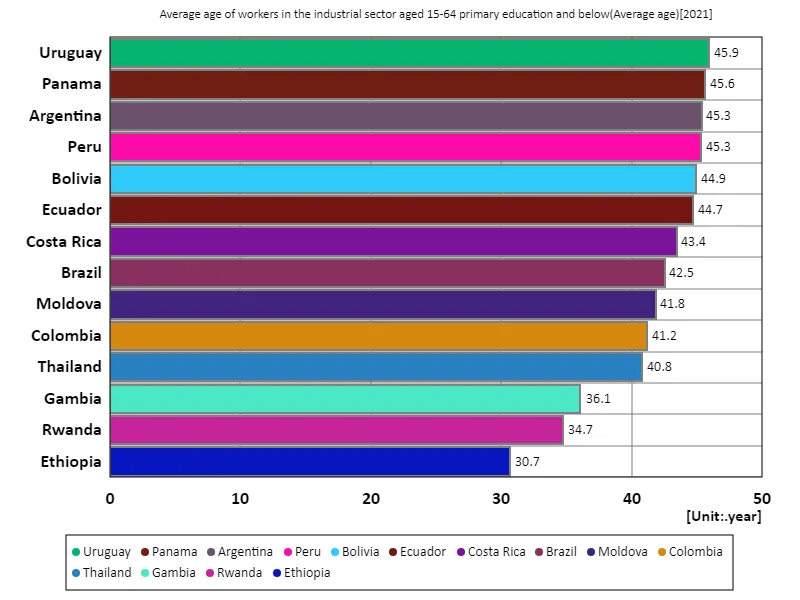

The maximum is 45.9year of Uruguay, the average is 41.6year, and the total is 583year
Industrial sector, workers aged 15-64 with primary education or less, average age (region, latest year)
According to 2008 data, the average age of workers in the industrial sector aged 15-64 with less than primary education was 32.6 years, with the Central African Republic recording the highest value. The data reflect the characteristics of labour markets found in many developing countries, including the Central African Republic. Specifically, the age group of workers is relatively young. Developing countries tend to have lower levels of education, younger workers, and more young people entering the labor market for the first time. This keeps the average age low. Furthermore, the industrial sector in these countries remains dominated by traditional manufacturing and heavy industry, which has led to slow progress in technological innovation. Because the population is not aging, younger workers often continue to play an active role in the field. This trend contrasts with the ageing population in developed countries and points to greater labour market dynamism and growth potential in developing countries. However, without improvements in education and skills, future growth may be limited.
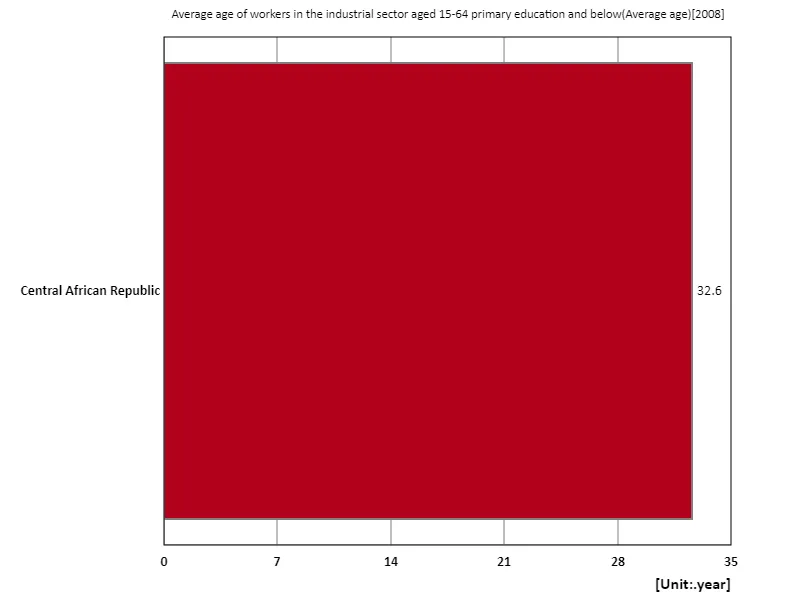

The maximum is 32.6year of Central African Republic, the average is 32.6year, and the total is 32.6year
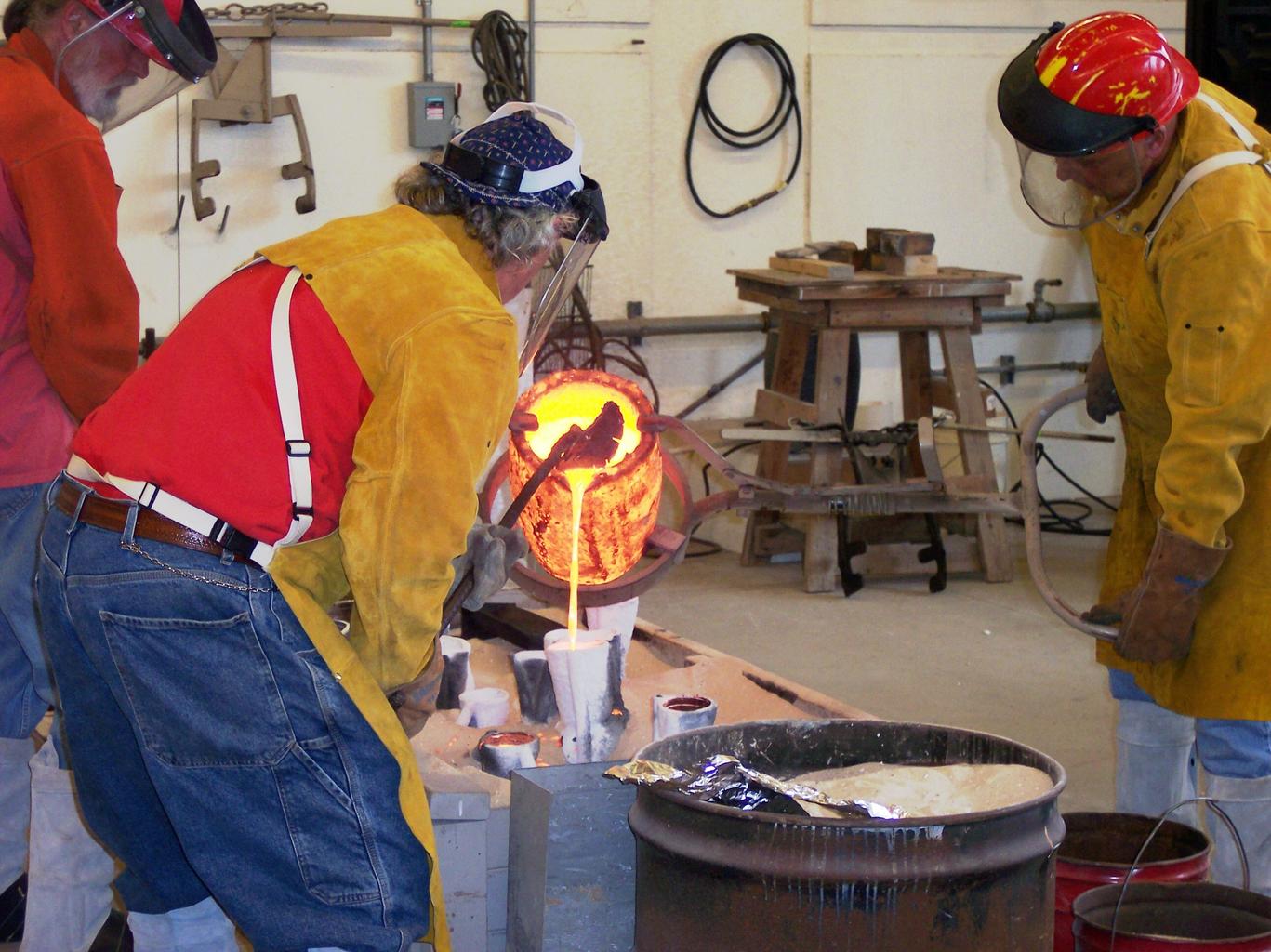


Comments